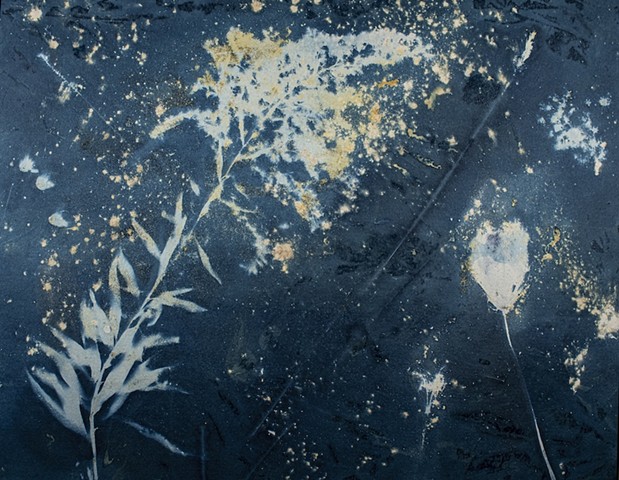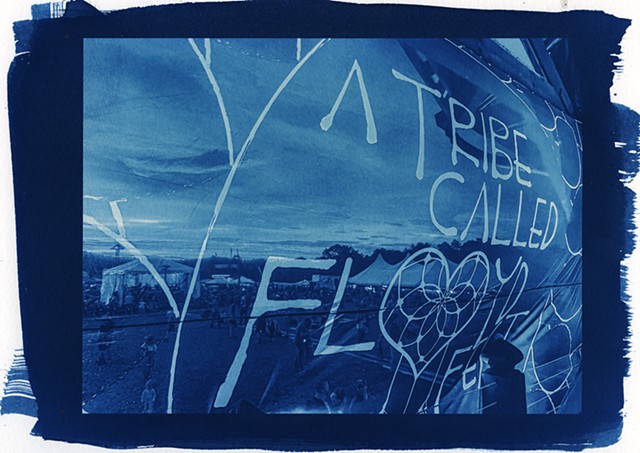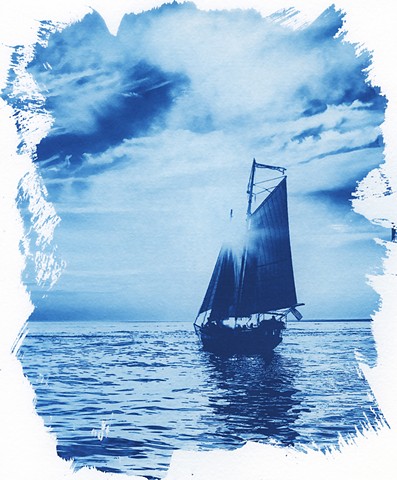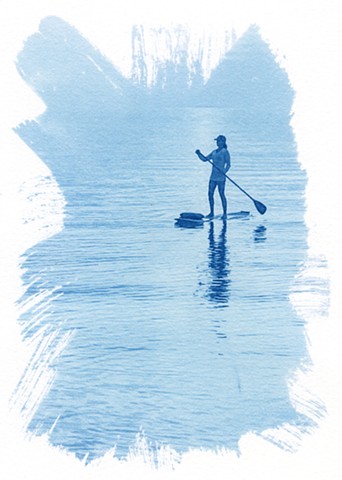Cyanotype
The cyanotype process was developed in 1842 when Sir John Hershel discovered that two iron-based chemicals could be combined to form a light-sensitive coating on glass, paper, and other substrates. When exposed to the sun through a photographic negative, a positive image was revealed. The chemicals produced blue tones, hence the name "cyan-otype.
A contemporary of Herschel named Anna Atkins laid leaves, flowers, and other botanicals on cyanotype-sensitized substrates to create beautiful photograms. Architects began using the process to make copies of architectural drawings; the reversal process produced white lines on the cyan background that to this day are called "blueprints."
Most people who start down the alternative processes path begin with cyanotype because it is so easy, safe, and forgiving. Many never leave, and create beautiful prints of many different subjects, sometimes toning them to change the blue tones, or to split-tone them to add other colors to their prints.



